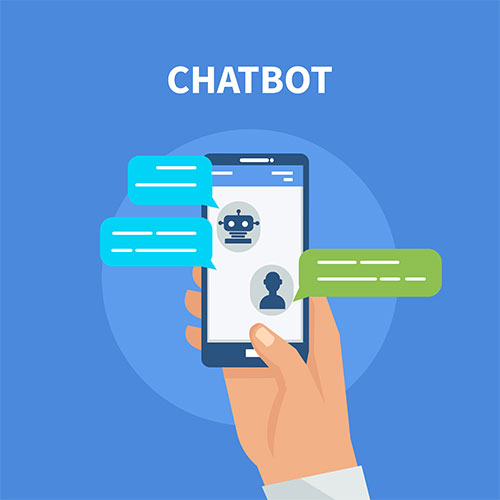
In a technology context, the term ‘chat’ refers to real-time communication via internet. Messaging apps like Facebook messenger and WhatsApp are examples of tools utilizing “chat”, and the number of these chat app users now exceeds those using SMS apps.
‘Bots’ refer to software application that performs automated tasks on behalf of users. Some examples of bots include web search engine bots that collects and sorts all the information on the internet, as well as the thousands of messaging bots crawling around Twitter.
A chatbot combines these two ideas, creating a computer program that conducts conversation between users and automated process.
Today, most Internet users can claim that they regularly encounter chatbots in their everyday life. They are used in news distribution, inquiry correspondence, merchandise sales, and entertainment. The increased number of messenger app users as well as exposed API is also contributing to the rising popularity of chatbots. A lot of consumer chatbots work on messenger apps, enabling users to access the chatbot without downloading other apps or learning how to use it. They answer to the users’ requests in significantly shorter amounts of time and can operate around the clock.
Even in B2B sectors, there are plenty of cases where chatbots are connected to enterprise systems.
Chatbots’ are usually built with the following three AI technologies:
1. Rule-based AI
How does it work?
- Human register specialized knowledge to a system as a rule, and the system processes and returns results.
Drawbacks:
- The system can only handle questions that are already registered.
- It takes time and labor to create a set of rules
2. Machine Learning
How does it work?
- Human specify and teach the system which features the system should pay attention to. The system, as a result, can learn without explicit programming.
Drawbacks:
- It can be expensive to develop and manage the system as it requires a lot of labor to identify which features the system should focus, along with a long system education timeline.
3. Deep Learning
How does it work?
- The system automatically extracts features and learns without human guidance. It is expected to overcome the shortcomings of Machine Learning, and is widely used for voice and image recognition.
Drawbacks:
- It cannot be applied to natural language processing (yet), and more technological advancement is needed.
Most chatbots in existence today are rule-based bots, and therefore they sometimes cannot respond to complicated inquiries, thus requiring human to intervene. At the same time, chatbots enable real-time communication with consumers, which in turn generates new opportunities for business to engage with clients. Chatbots are expected to become more sophisticated as the AI keeps evolving.